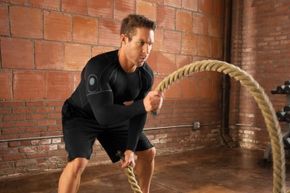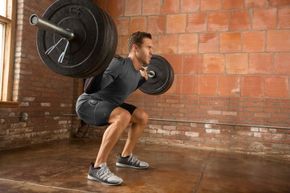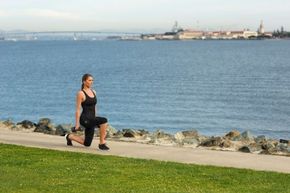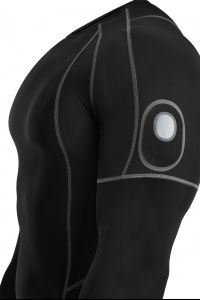Workout mirrors can be downright creepy. Some people with odd narcissistic streaks may enjoy watching themselves contort and sweat while "Let's Get Physical" blares through overhead speakers, but most people probably do not. Furthermore, mirrors aren't exactly a precise way to gauge your workout moves — you often have to angle your head uncomfortably to try to catch a glimpse of your form. And what constitutes an efficient stretch for one person might result in a hospital visit for another, so there's a potential for error. In today's evermore connected world, there are better ways to track your exercise routines.
There are a whole lot of wearable fitness gadgets right now, such as the FitBit, Jawbone UP and Nike FuelBand. Most of them employ a collection of accelerometers and gyroscopes to gather basic data about your movements. These are great for tracking your activity levels over the course of an entire day, offering estimates for fundamentals such as steps taken and calories burned.
Advertisement
But the Athos line of fitness clothing is different. It aims to ratchet up exercise tracking to a higher degree of precision using more refined data, thanks to a bevy of sensors directly tracking electrical activity generated by 22 groups of hardworking muscles.
The Athos system is designed for casual athletes as well as those who are trying to maximize their fitness and looking for any possible edge to get ahead of their competition. Deployed properly, Athos garments help you gauge your effort and even find correct form, and as a result, they may help you avoid an injury that sets your training back weeks or months. It could also be used for physical rehabilitation, assisting people who need to carefully monitor their strain and exertion levels, particularly for muscles that are struggling to heal.
Like almost all contemporary workout trackers, Athos connects to your smartphone. As you run, jump, stretch or skip, you can watch the real-time data displayed through the Athos app to see how much (or how little) you're exerting specific areas of your body, as well as your effort level as whole. With that data, you can decide whether to pull back and protect yourself or keep pushing to get the most out of your time-crunched workout schedule.
So, how do these stretchy, sensor-laden garments kick your workouts into overdrive?
Advertisement




